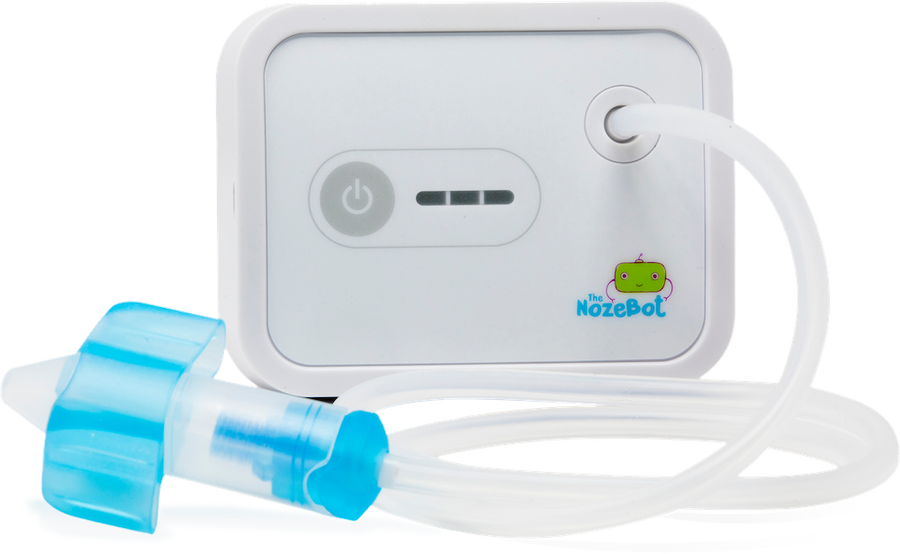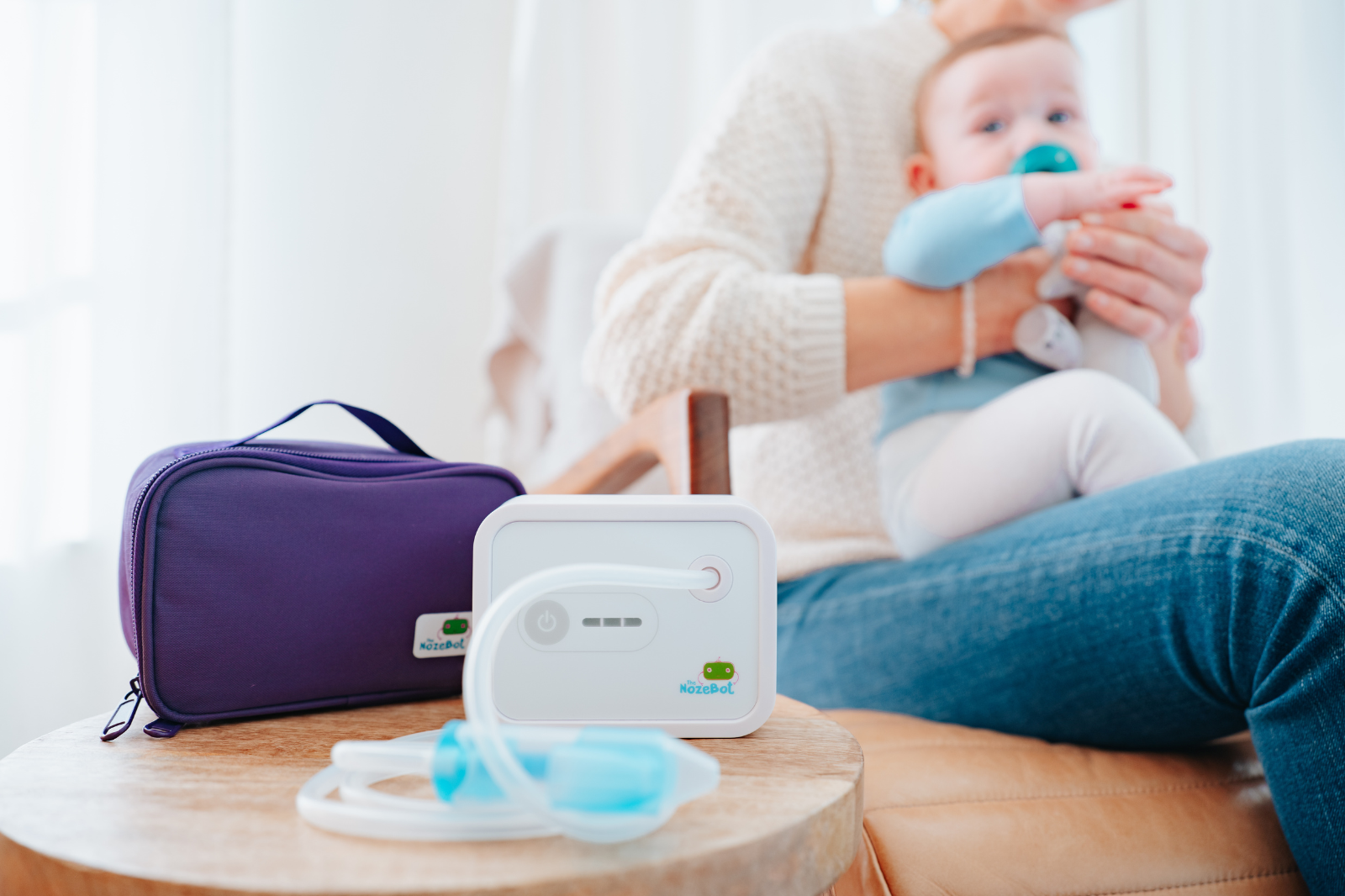Guest Post by Katy Fleming, MA, LPC, BSN, RN
It’s a scary feeling for both mom and the kiddo when blood streams out of our little one’s noses. Thankfully, nosebleeds typically aren’t serious, especially in otherwise healthy kids.

Common misconceptions about bloody noses can cause problems such as tilting your head back and allowing your child to swallow the blood. Learn how nosebleeds begin and tips for quickly stopping the bleeding.
Nosebleeds 101
Most common in children ages 2-10, nosebleeds occur when blood vessels break within the tissue of the nose. In most cases, you can easily care for your child’s nosebleed at home with some common household items.
Potential Causes of Nosebleeds
In the winter season, there’s an uptick in nosebleeds since we spend more time in dry indoor air in our homes.
Dry Air
The warm dry air irritates and dries out the inside of your nose to the point of bleeding. Medications to help control allergies can often dry out the nose, also.
Nose Picking
For our younger kids, nose-picking is often a cause of nosebleeds, as well. When scabs or crusts form inside our nose, it’s itchy and annoying. Sometimes even adults scratch an itch inside their nose, which may lead to bleeding. 
Colds & Nose Blowing
Continual nose blowing, especially if you have a cold, may lead to a nosebleed. The swelling of a sinus infection may also irritate the nose.
The most common non-serious cause of nosebleeds in children is typically a dry environment or nose picking.
Facial Injuries or Abnormal Tissue
A facial injury may cause a nosebleed, such as your little one accidentally falling and hitting their face. Although a more traumatic event, these often are not serious.
Abnormal tissue growth can lead to nosebleeds, but most are not cancerous.
How to Stop a Nosebleed
Here are a few easy steps to promptly and efficiently stop your child’s nosebleed.
- Remain calm with a gentle voice, and remember that most nosebleeds are not serious.
- Encourage your child to remain still as talking or laughing may lead to further bleeding.
- Have your child sit in a chair with their head tilted slightly forward.
- If your child is old enough, instruct them to pinch the soft part of their nose between their finger and thumb. For younger children, you may need to assist with pinching the nose. Pinch directly below the bony ridge on the soft part using a tissue or damp washcloth.
- Apply this pressure for approximately 10 minutes. Do not check the nose for at least 5 minutes. If you stop early to peek at their nose, the clot may not form causing continued bleeding.
- Remind your child to breathe through their mouth during this time.
- After the bleeding stops, ensure that your little one does not blow or pick their nose afterward as this may restart the nosebleed.
If the bleeding does not stop after two attempts of consistent pressure for 10 minutes, call your child’s pediatrician for further instruction. Discuss any head injuries, heavy bleeding, dizziness, or other concerns with your doctor.
Never allow your child to tilt their head back or lie down with a nosebleed. There’s no need to stuff their nose with tissues or gauze either.
Prevention
If your son or daughter is more prone to nosebleeds, here are a few tips to avoid the next one.
Place a cool mist humidifier in your child’s bedroom to prevent the air from drying out your little one’s nose. Saline nasal spray or petroleum jelly may also help keep their nose moist.
Trim your child’s fingernails to discourage picking and scratching inside the nose. Encourage gentle nose blowing especially when your kiddo isn’t feeling well.
For older children who play sports, ensure they always wear protective equipment to prevent facial injuries.
Talk to your child’s pediatrician or ear, nose, and throat (ENT) doctor if nosebleeds continue despite these preventative measures.
Enjoying these parenting tips? You’ll love these:
- 20 Genius Travel Hacks for Parents
- Treatment For Croup: What Parents Need to Know
- Hilarious Parenting Tweets That Will Make You LOL
- 10 Parents Podcasts to Help You Kick Off the New Year
- Ways Parents with Children with ASD Can Empower Themselves
Although it’s sometimes frightening when our kid’s noses begin dripping blood, nosebleeds are usually harmless and easily controlled.
Apply consistent pressure for 10 minutes and contact your doctor’s office with any concerns.
The Nozebot is a battery-powered suction device designed to clear nasal congestion in babies and children.


